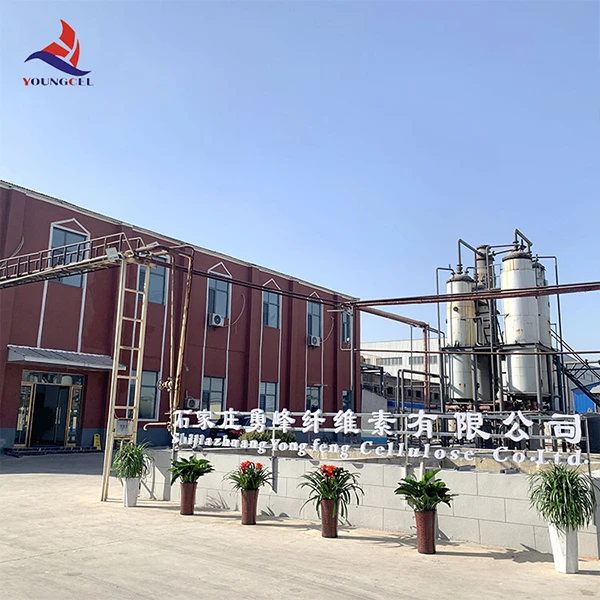The Role of Cellulose in Paint Thickeners Enhancing Texture and Performance
When it comes to the world of paint formulation, achieving the desired texture, viscosity, and performance is crucial. Among the various additives used in paints, cellulose-based thickeners have gained significant popularity due to their unique properties and versatility. This article delves into the importance of cellulose in paint thickeners, exploring its benefits, applications, and the science behind its functionality.
Understanding Cellulose
Cellulose is a natural polymer derived from the cell walls of plants. It is an abundant biopolymer and a key component of materials like wood and cotton. In paint formulations, cellulose is commonly processed to create derivatives such as hydroxypropyl methylcellulose (HPMC) or carboxymethyl cellulose (CMC). These cellulose ethers play a vital role in modifying the viscosity and rheological properties of various paint types.
Benefits of Cellulose Thickeners
1. Thixotropic Behavior One of the standout features of cellulose thickeners is their thixotropic nature. This means that when shear (agitation) is applied, the viscosity decreases, allowing the paint to flow smoothly during application. Once the shear is removed, the viscosity increases, ensuring a stable consistency. This behavior results in easier paint application and minimizes drippage, enabling uniform coverage.
2. Improved Stability Cellulose thickeners enhance the stability of paint formulations. They help maintain the suspension of pigment particles and prevent settling, ensuring that the paint remains homogenous over time. This stability is essential for achieving consistent color and finish, especially in decorative paints.
3. Adjusting Texture The addition of cellulose allows formulators to achieve specific textures and finishes. Whether aiming for a smooth, glossy appearance or a textured, matte surface, cellulose thickeners can be tailored to meet these requirements. This flexibility makes them valuable in a wide range of applications, from residential to industrial coatings.
4. Environmental Friendliness Being derived from natural, renewable sources, cellulose thickeners are often considered more environmentally friendly compared to synthetic alternatives. As the paint industry moves toward more sustainable practices, cellulose-based additives fit well within the framework of eco-conscious formulations.
5. Compatibility Cellulose thickeners exhibit good compatibility with various paint systems, including water-based and solvent-based formulations. This versatility allows paint manufacturers to incorporate cellulose into a wide range of products without compromising performance.
Applications of Cellulose Thickeners
cellulose paint thickener

Cellulose thickeners find applications in multiple types of paint and related products
- Architectural Coatings In residential and commercial building paints, cellulose thickeners provide the required viscosity and stability, ensuring easy application and lasting performance.
- Industrial Coatings The automotive and manufacturing sectors rely on cellulose thickeners for their ability to withstand varying shear conditions during application while maintaining a stable formulation during storage.
- Acrylic Paints Acrylic emulsions benefit from cellulose thickeners, which help in achieving the desired flow and leveling characteristics. As a result, artists and hobbyists can produce fine artworks with smooth finishes.
- Textile Coatings In textile applications, cellulose thickeners aid in dyeing and printing processes, allowing for better control over viscosity and improved color penetration.
The Science Behind Cellulose Thickeners
The effectiveness of cellulose thickeners lies in their chemical structure. The polymer chains consist of hydroxyl groups that can form hydrogen bonds with water molecules, contributing to the thickening effect. When incorporated into paint, these cellulose derivatives swell in the presence of water, increasing viscosity and enhancing the overall texture of the formulation.
The molecular weight of the cellulose and the extent of etherification (the introduction of ether groups) determine the thickening efficiency and solubility of cellulose derivatives. Adjusting these parameters allows formulators to create customized thickeners suited to specific applications.
Conclusion
Cellulose thickeners play an essential role in the paint industry by enhancing texture, improving stability, and providing environmentally friendly options for formulators. As paint manufacturers continue to innovate and seek sustainable solutions, the use of cellulose-based additives represents a significant step forward in creating high-performance paints that meet the demands of consumers while being kind to the environment. Through continued research and development, the versatility and benefits of cellulose in paint applications are set to grow, ensuring its place as a crucial component in the future of paint technology.




